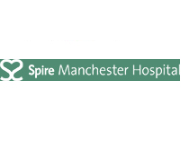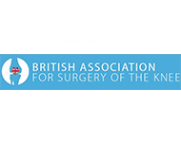Post-Op Care / Rehabilitation
Post-Operative Care
During your early post-operative period your surgeon will provide you with the appropriate medication and care needed for your recovery. In the early postoperative period following a joint replacement surgery your active involvement is necessary for a quick and successful recovery.
Day of surgery
You will remain in the recovery room for two hours for monitoring after your surgery and then be transferred to your hospital room.
Incision Care
There will be a sterile dressing over your surgical wound. Your wound dressing will be changed regularly and removed about a week after surgery. Depending on the suture material used, the sutures may either be removed or left in situ to be gradually absorbed. You need to keep your wound clean and dry. You can usually use the shower the day after surgery.
Medications
Your surgeon will prescribe pain medications to ensure your comfort after surgery. To protect the implants from infection, you will be prescribed antibiotics. You may also receive a blood thinner for 2-3 weeks to reduce the risk of clot formation after your surgery.
Physical therapy
Walking is important to your recovery and you are encouraged to walk the day of your surgery. Your physical therapist will teach you specific exercises to strengthen your new joint and restore its range of motion. You will also be advised on a home exercise program after your discharge from the hospital.
Follow Up
You will be advised to make a follow-up appointment with your surgeon to check on your progress after your discharge. You should see your surgeon at regular intervals for follow-up examinations.
If there are any queries or concerns, please consult your surgeon.
Post-op Rehabilitation
Rehabilitation is a treatment method designed to facilitate recovery after a serious injury, illness or surgery. It is aimed at restoring the physical, sensory, intellectual, psychological and social function of the patient.
The goal of a rehabilitation program varies depending on the patients’ needs but is aimed at achieving a quick recovery. This program assists the patient to return to normal life through therapy or training.
Post-operative rehabilitation program offers faster healing.
A rehabilitation program is recommended for people who cannot resume their normal activities following an injury or a surgery. The rehabilitation team works with the patient on various physical activities and flexibility exercises that help to regain the strength and motion of the muscles in the injured site.
The most common and immediate treatment modality that provides relief from pain is the RICE treatment comprised of rest, ice, compression, and elevation. The RICE treatment is used for acute injuries such as sprains, strains, bruises, and contusions. Crutches, splits, or wheelchairs are used as immobilizers to provide support and prevent movement of the injured joints. A rehabilitation program often includes stretching and bending exercises, massage, stability exercises, physiotherapy, heat therapy and much more.
Various techniques employed in a rehabilitation program have significance of their own in improving physical performance and restoring the patient to normal activities.
- Stretching and bending exercises improve flexibility of the muscles at the injured site
- Massage techniques relieve the tension of the muscles and improves the blood flow to the site of injury
- Stability exercises restore the functions and movements of broken or injured joints
- Use of appropriate gears corrects biomechanical dysfunction such as specially designed running shoes are recommended for sports individuals with foot injury. These shoes have a harder material inside of the sole which prevents the foot from rolling in.
Practicing several measures may help you obtain better results from the rehabilitation program
- Gradually increase the time and intensity on exercises
- Exercise and walk regularly
- Choose correct footwear
- Do not work out on an empty stomach and drink plenty of water before





